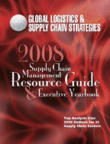
Visit Our Sponsors |
|
|
|
|
|
|
|
|
|
|
|
|
|
|
|
|
|
|
|
|
|
|
|
|
|
|
|
|
|
|
|
|
|
|
|
|
|
|

Analyst Insight
Aerospace and defense companies are finding themselves in a whole new world right now, with the pressing need to give up control of significant portions of their supply chain; the suppliers of yesterday are partners today. This loss of control is causing short-term disruptions and challenges but will be helpful in the long run. The need of the hour is the ability to have real-time visibility into supply chain risks and reduction of lead times.
-Nari Viswanathan, research director at Aberdeen Group
The Aerospace and defense sector is a leader in innovative supply chain and manufacturing techniques that have the potential to create a lasting impact on other industries. This is an industry that has been characterized by long lead times, captive suppliers, vertical integration and inefficiencies in costs. However, the disruptive effects of global competition and increased supply chain risks in this arena are forcing companies to look closely into their supply chains.
Some key pressures within the A&D supply chain:
• Order-to-delivery lead times. Commercial airlines and consumers are demanding products more quickly and cheaper, as well as with improved capabilities. This has resulted in Boeing's adoption of a global partnership model for building its 787 Dreamliner aircraft, for example. Global competition and pressure from the OEMs is forcing suppliers to reduce order-to-delivery lead times or be driven out of business.
• Global supplier collaboration. Some of the areas of collaboration that are getting traction in this industry are: collaborative inventory management with suppliers; utilizing shared online information, such as forecasts, capacity, etc.; and the ability to automate the replenishment of parts (especially the C-class parts).
• Regulatory compliance. A&D companies are pressured to turn out compliance initiatives continuously, resulting in a need for more technology-driven business processes. For instance, there is a divide in commercial and military supply in the A&D sector-goods are often coming from the same suppliers but need to be tracked separately because of the military's higher levels of quality and different compliance and documentation requirements.
• Sales & operations planning and lean supply chains. Practices like S&OP and lean supply chains that have been slow to catch up in this sector are gaining rapid adoption and mind share from companies.
• Supply chain visibility. The defense supply chain leads the rest of the industries in the usage of RFID technologies for supply chain visibility.
The Outlook
Aberdeen research finds that sales and operations planning, visibility, and supplier collaboration are three areas with large technology investments in the 2007-2008 time frame. This trend is driven by the increasing amount of externalization of business processes within the A&D sector. Look for on-demand solutions to help OEMs manage business processes for their trading partner base.
RELATED CONTENT
RELATED VIDEOS
Timely, incisive articles delivered directly to your inbox.






